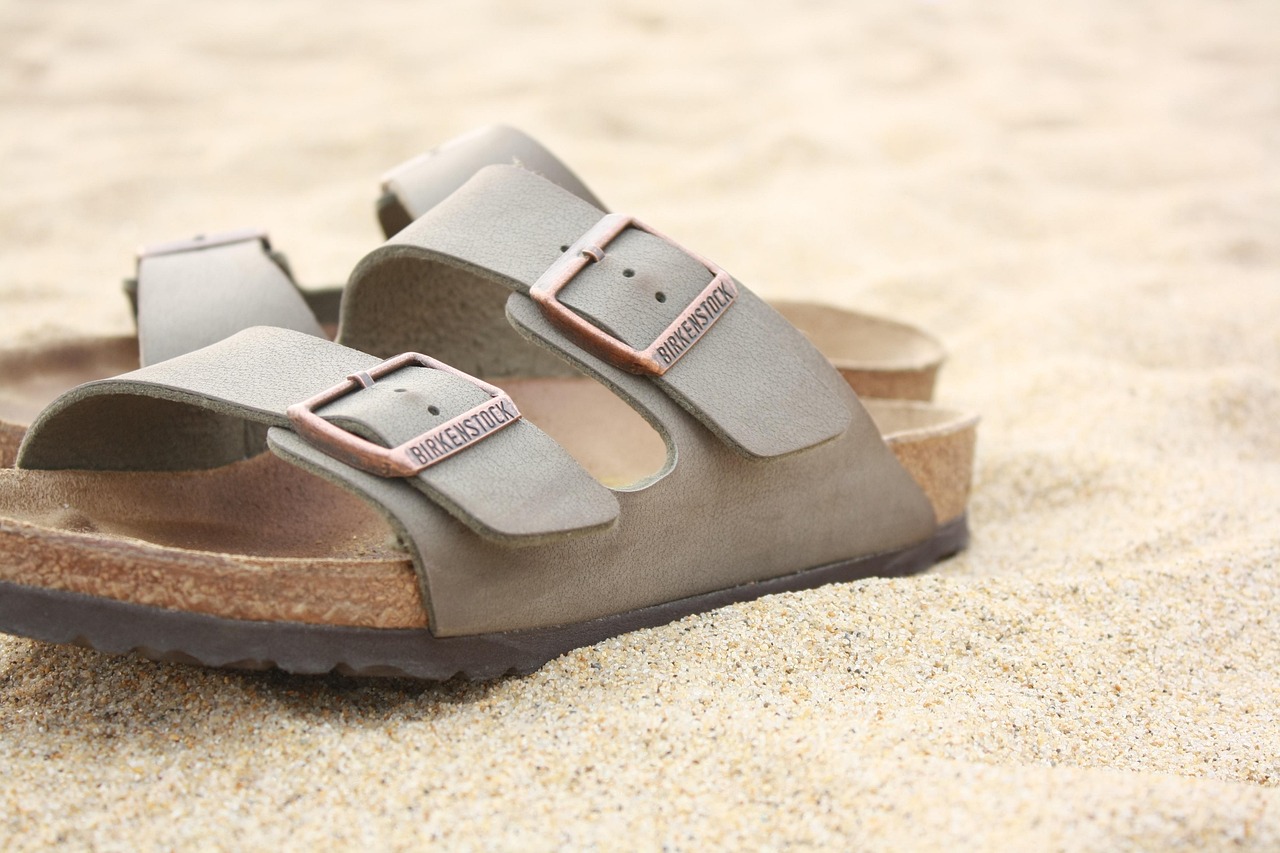
In a decision of 20 February 2025 the German Federal Supreme Court (BGH) denied copyright protection as a work of applied art for two sandal designs. The ruling clarifies the scope of protection under German and EU law for works of applied art. According to the BGH, works of applied art enjoy protection if they are original in the sense that they are an author’s own intellectual creation, reflecting free and creative choices. The functional or technical requirements of useful objects can limit creative choices but do not, in principle, require a higher level of originality.
Facts
Birkenstock is the producer of sandals that have become somewhat of a fashion item in the recent past. The defendant offers leather sandals online that are strikingly similar to two of Birkenstock’s sandal models, namely ‘Madrid’ and ‘Arizona’. Birkenstock sought protection against these apparent unauthorized reproductions of the sandals as works of applied art under Section 2 of the German Copyright Act (UrhG). On appeal against a decision of the Higher Regional Court of Cologne, the BGH confirmed that the Birkenstock sandals did not display a sufficiently high degree of creativity to qualify for copyright protection as works of applied art.
Ruling
The BGH found that the Birkenstock models could not be classified as works of applied art, but merely as designs. With reference to the relevant CJEU case-law, including CJEU decisions in Infopaq International (C-5/08), Painer (C-145/10) and Cofemel (C-683/17), the court reiterated that works are protected by copyright if they are original, which means that they must be an author’s own intellectual creation, which requires that they reflect the author’s personality, based on free and creative choices. A work does not qualify as original if the author is bound by technical considerations or requirements, but the mere exercise of a choice does not automatically qualify a creation as a protected work.
With reference to its own jurisprudence, the BGH qualified that a personal intellectual creation is one with a personal imprint the aesthetic substance of which has attained such a degree that, according to persons receptive to art and who are relatively familiar with perceptions of art, it can be considered as an ‘artistic achievement (original: ‘künstlerische Leistung’). A personal intellectual creation can be excluded when technical requirements do not leave room for artistic creativity. Moreover, the mere possibility to choose between several substitutable design options does not constitute an artistic achievement if these options are determined by technical requirements. Although the recent jurisprudence of the court does not distinguish between the required level of intellectual creation for works of applied art and works of purpose-free artistic creation, the freedom of choice is naturally limited in relation to the former. The BGH considers that this interpretation is in conformity with the case-law of the CJEU on the interpretation of the notion of ‘work’.
The BGH refuted the appellant’s argument that the terminology used by the appeals court would suggest that German law required a higher level of creativity. The BGH rejected this assertion of an error in law by equating the traditional German terminology of ‘artistic achievement’ (‘künstlerische Leistung’) with the notion of an author’s own intellectual creation pursuant to the CJEU’s case-law. This interpretation would also not preclude a cumulative protection of a creation by design and copyright law. The notion of ‘artistic achievement’ must therefore be interpreted in light of the notion of ‘work’ as developed by the CJEU and requires a degree of creative (or artistic) achievement that enables the identification of some form of individuality. Mere exercise of craftsmanship by the use of formal design elements would therefore not suffice to obtain copyright protection. However, mere aesthetic appeal does not serve as a useful criterion to distinguish between protectable subject matter and ‘mere’ designs. Finally, the BGH did not find it objectionable that the appeals court had required that a useful object must be subject to closer scrutiny as to whether the creative choices go beyond the functional requirements and, as a result, attain the required level of artistic creativity.
On the facts, the BGH found that the two Birkenstock models concerned did not meet the required level of originality. While the designer of the models, Karl Birkenstock, had made certain choices, other design options had been possible. However, the creative leeway had not been used in an artistic manner. The choices made were aimed at producing a healthy and marketable sandal. In addition, the mere fact that after the creation of the two models they had been appreciated for their aesthetic appeal and therefore featured in exhibitions and museums and had even won prizes for their design did not carry any weight. Their public exposure and appreciation was limited to design, but not artistic circles.
Comment
The BGH decision has attracted worldwide attention with media such as The Guardian and The New York Times reporting on the decision. This elevated interest for an ordinary copyright decision is presumably owed to the remarkable transformation Birkenstock sandals have undergone. Once titled Jesus slippers (‘Jesuslatschen’) and for a long time the preferred footwear of geography and biology teachers in German secondary schools, they have in the meantime conquered high streets and fashion boutiques. Where one (including the present author) might see an aesthetical abomination, others see a timeless and essential fashion classic (see here) akin to the little black dress.
Be that as it may, the law is agnostic to the tides of fashion. The BGH made it clear that despite terminological differences, the standards of originality as applied to applied art and art that merely serves its own purpose (to be art) are the same. However, the room to exercise (artistic) creativity is limited when functionality dictates certain design choices. The mere exercise of choice between several design options does not by itself constitute the required level of an ‘artistic achievement’. The exercise of the relevant choices must also be ‘free and creative’ – in the parlance of the CJEU – to fulfil the requirement under copyright law for a ‘work’.
It is if anything unfortunate that the BGH adheres to its traditional terminology and creates some confusion amongst commentators (see here and here). It does however clarify that the criterion of “artistic” has to be interpreted in the light of the CJEU’s case-law and not, for example, on the constitutional concept of ‘art’ under Article 5, first sentence, first paragraph of the German Basic Law.
The result is a clearer distinction between the protection afforded under design law and that offered under copyright law. On the facts, the BGH could also not conclude that the appeals court had made relevant errors. The BGH also found that currently pending questions in konektra v USM Haller (C-795/23) and Mio (C-580/23) would not influence the outcome of the case. However, they will shed light on three particularly important questions: whether the subjective intent of the creator has any bearing on the qualification as an artistic work; whether events taking place after the act of creation matter for the qualification as a work; and whether works of applied art require a higher level of originality. At least the last question seems to have been answered in the negative by the CJEU in Cofemel.
________________________
To make sure you do not miss out on regular updates from the Kluwer Copyright Blog, please subscribe here.


